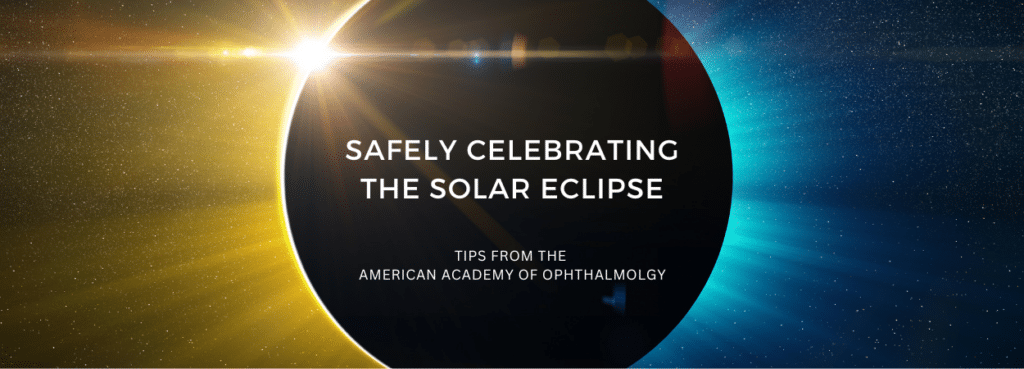
Prepare for the mesmerizing display of a solar eclipse on April 8th! As the moon positions itself between the sun and the Earth, creating a celestial alignment, it’s crucial to ensure your vision’s safety during this event.
Please note that you MUST use special-purpose solar filters (used in ‘eclipse glasses’) when looking at the eclipse. Regular sunglasses are NOT safe for viewing the sun and can cause serious damage to your eyes. For detailed guidance on safely viewing the solar eclipse, check out this article from the American Academy of Ophthalmology.
What you’ll learn in the article:
- Overview of Solar Eclipses: Understand what a solar eclipse is and why it’s important to protect your eyes during this natural phenomenon.
- Eye Damage from Solar Eclipses: Learn potential risks of looking directly at the sun during an eclipse, which can cause serious eye damage including solar retinopathy.
- Safety Measures: Gain insight on the importance of using proper eye protection, such as eclipse glasses or handheld solar viewers, to safely view a solar eclipse. It warns against using homemade filters or regular sunglasses, which do not provide adequate protection.
- Symptoms of Eye Damage: Recognize symptoms of eye damage from viewing a solar eclipse without protection, such as blurry vision, blind spots, and discomfort when looking at bright lights.
- Seeking Medical Help: Discover when individuals who experience any symptoms of eye damage after viewing a solar eclipse should seek immediate medical attention from an eye care professional.
- Precautions for Children: The article also highlights the need for extra caution when allowing children to view a solar eclipse and recommends using specially designed eclipse glasses that meet safety standards.
- Alternative Viewing Methods: Find alternative ways to experience a solar eclipse safely, such as using a pinhole projector or watching a live stream of the event.
Happy Viewing!









